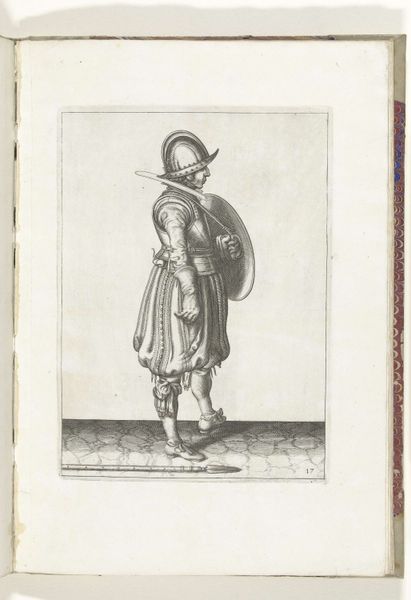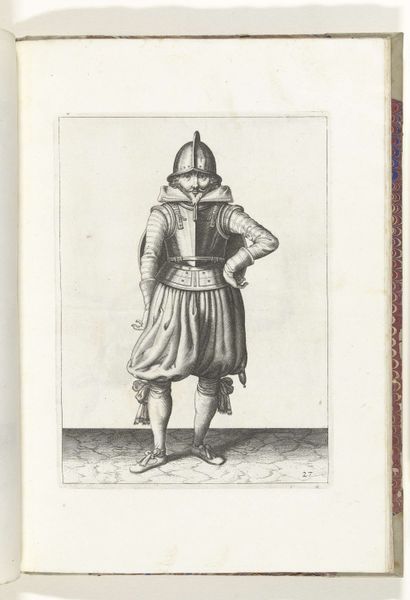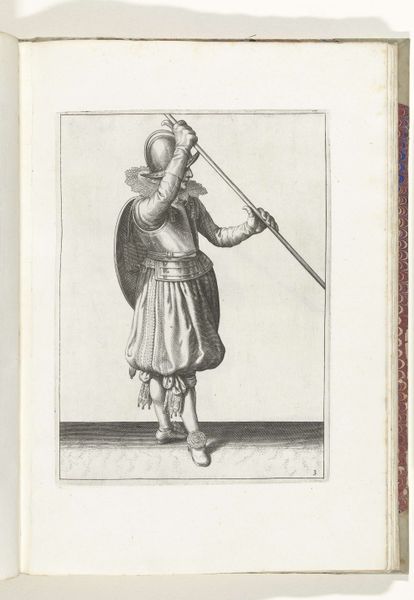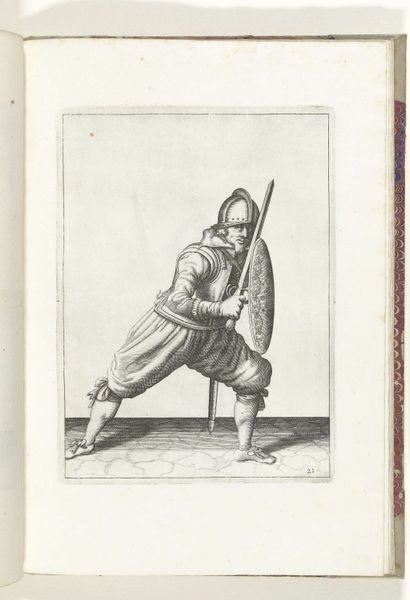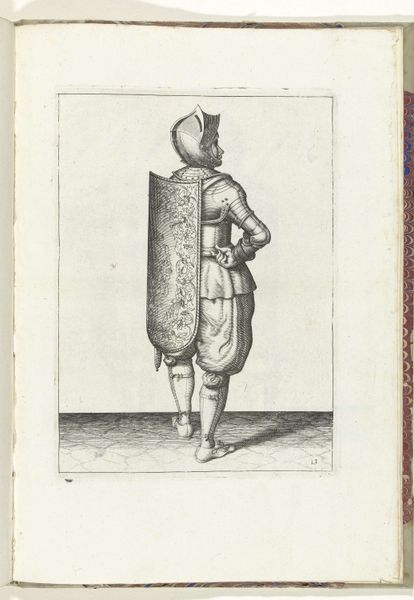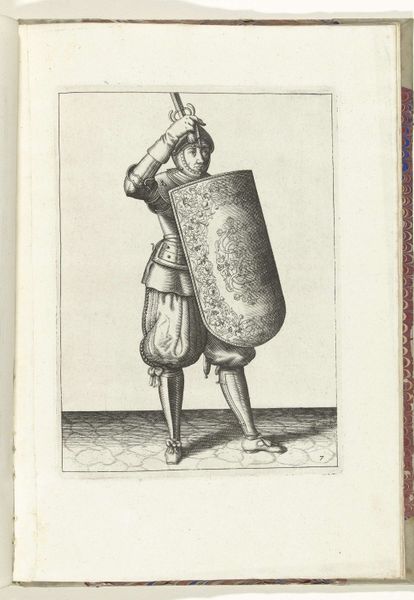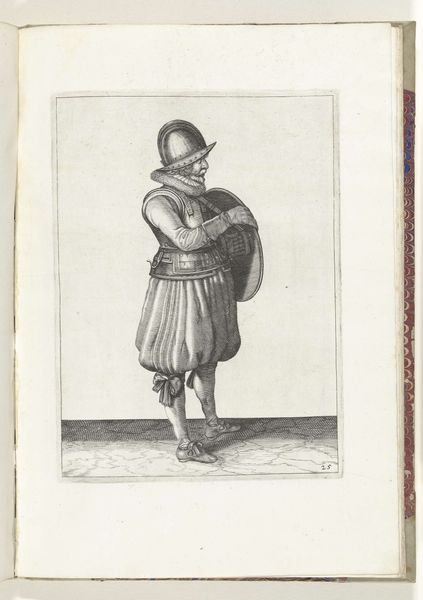
De exercitie met schild en spies: de soldaat brengt in drie tijden de spies weer terug in de rustpositie, tweede beweging (nr. 11), 1618 1616 - 1618
0:00
0:00
engraving
#
portrait
#
baroque
#
figuration
#
engraving
Dimensions: height 260 mm, width 190 mm
Copyright: Rijks Museum: Open Domain
Editor: This engraving, titled "De exercitie met schild en spies" by Adam van Breen, made between 1616 and 1618, depicts a soldier demonstrating how to bring a spear back to resting position. It is part of a series showing military exercises. It looks so meticulous, the way the artist captured the uniform’s texture through the engraving process. What aspects of this piece do you find most compelling? Curator: What fascinates me is how the artist painstakingly reproduced the reflective properties of the armor, juxtaposed against the duller texture of the shield, all through the industrial means of engraving. Consider the social context: prints like these standardized military training and disseminated martial knowledge across a growing, market-driven society. How do you think the materiality of this image—an engraving meant for wide distribution— impacted its message? Editor: That's fascinating! It's like the means of production were crucial to spreading military techniques and almost like promotional material. I wonder if soldiers or their leaders would purchase them? Curator: Precisely! The consumption of such images points to the bureaucratization and commodification of warfare. Someone had to make the paper, engrave the plate, print the image, and distribute it. These aren’t unique works of art; they’re products of a burgeoning military-industrial complex. Look closely at the repetitive nature of the exercise depicted; this isn’t about individual heroism but about standardized performance. Editor: So, seeing this as more than just art but understanding the labor, the distribution, even the consumption, really shifts how we understand the image’s purpose. Curator: Indeed! This work opens up conversations about standardization and martial dissemination which is exactly what Materialism attempts to do; challenge traditional assumptions. What have you learned during this exploration? Editor: That appreciating the historical, material, and economic context offers new perspectives to consider! Curator: Absolutely, by thinking about the print this way, it prompts discussion about value that reaches far beyond just aesthetics.
Comments
No comments
Be the first to comment and join the conversation on the ultimate creative platform.
